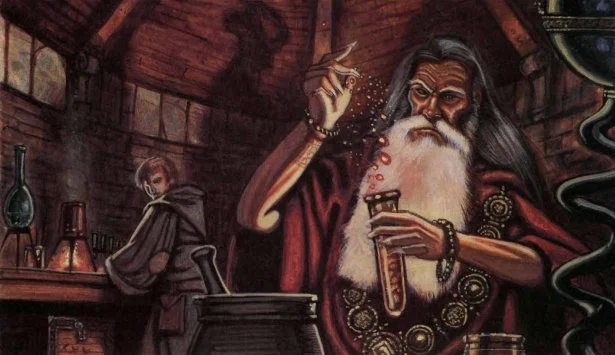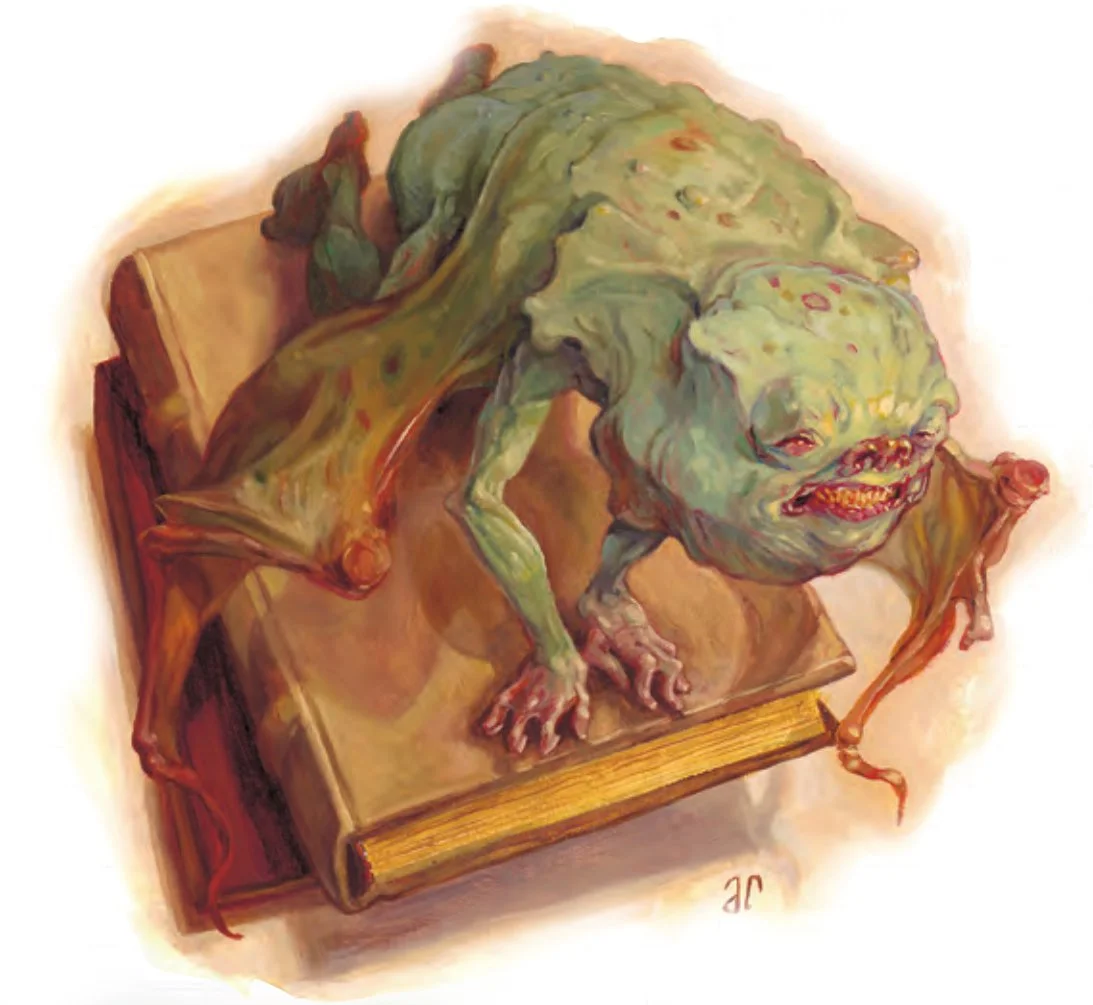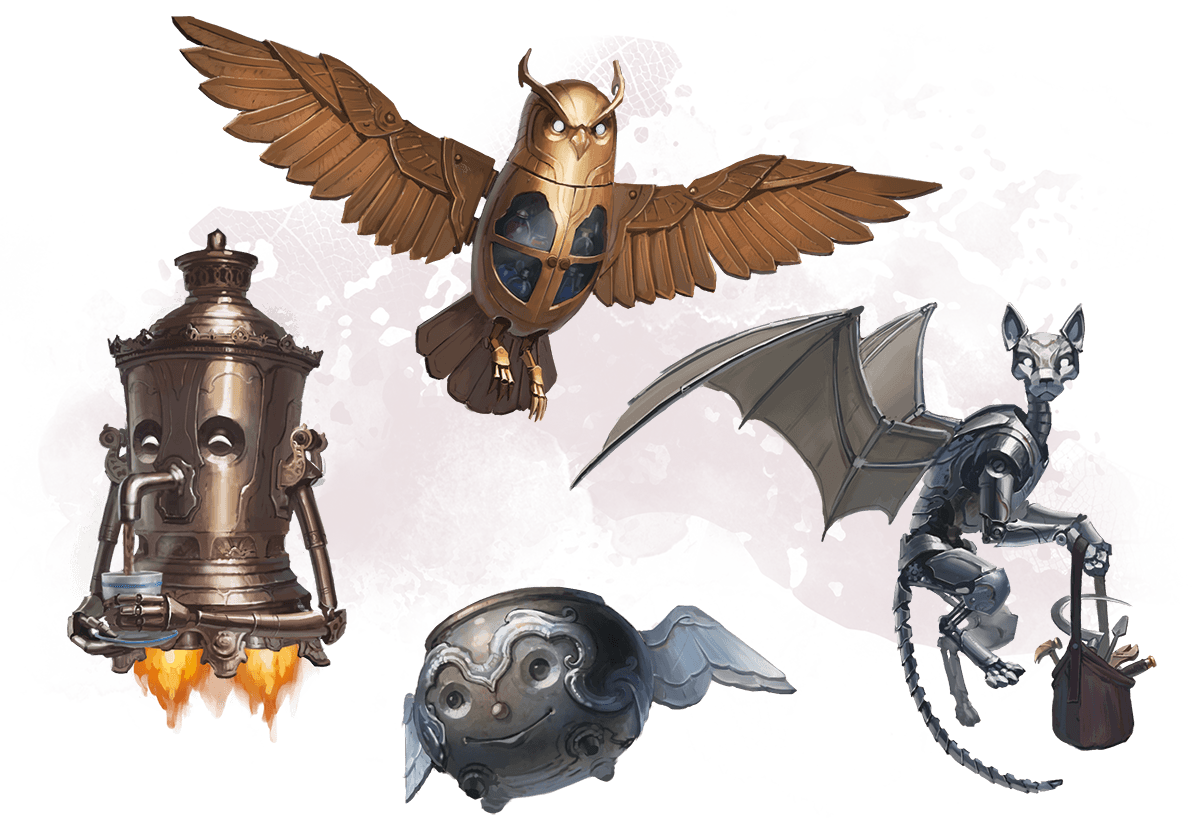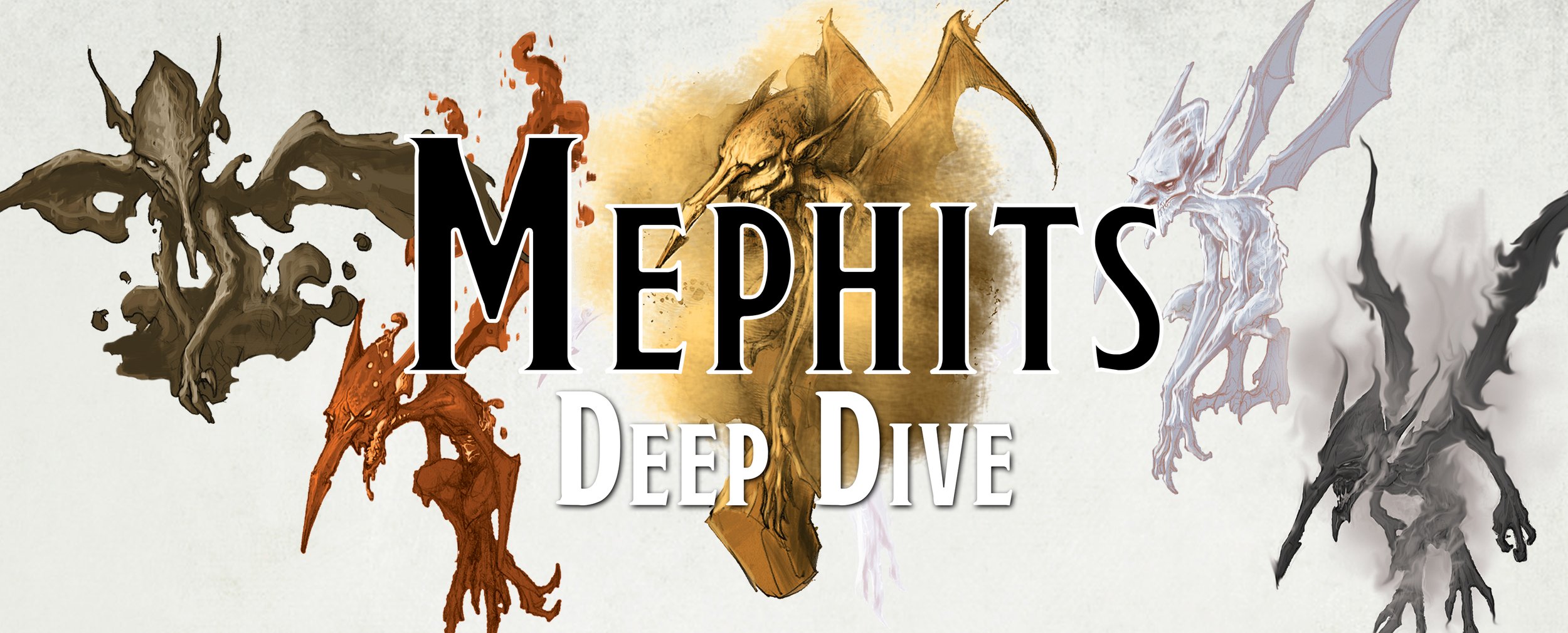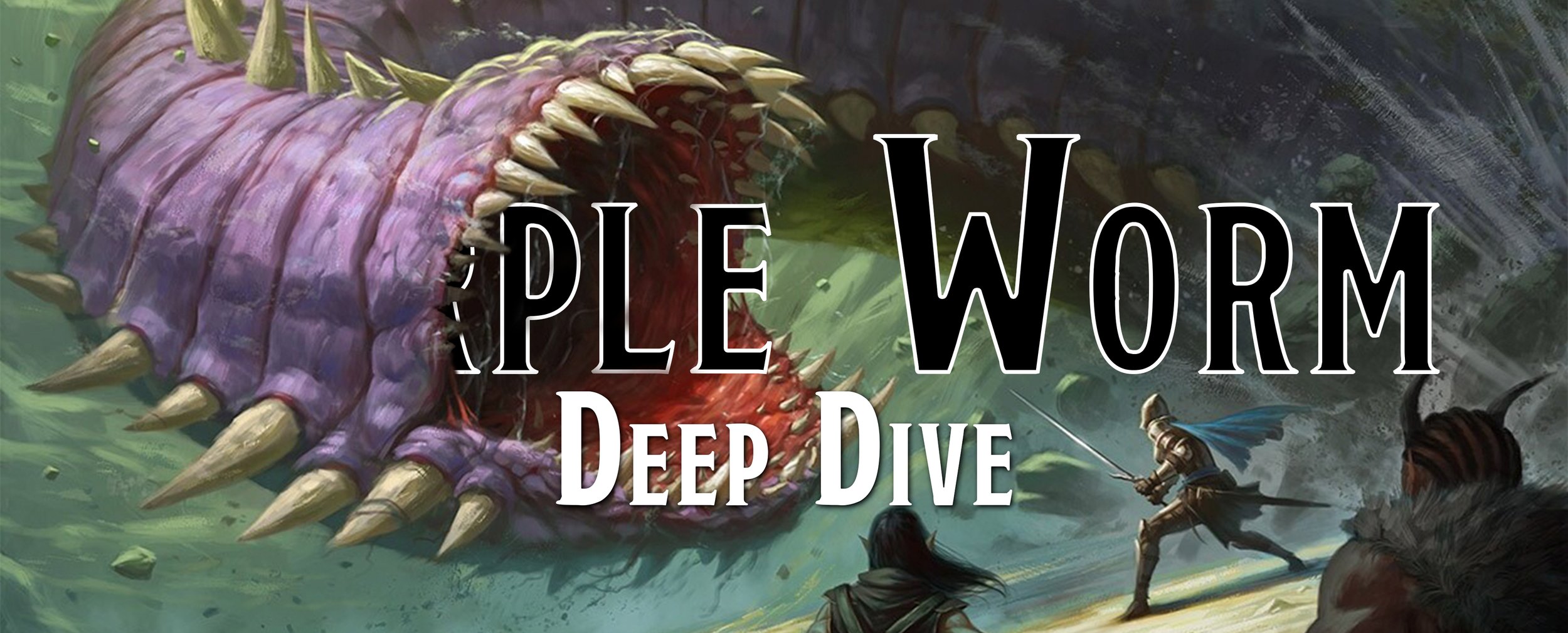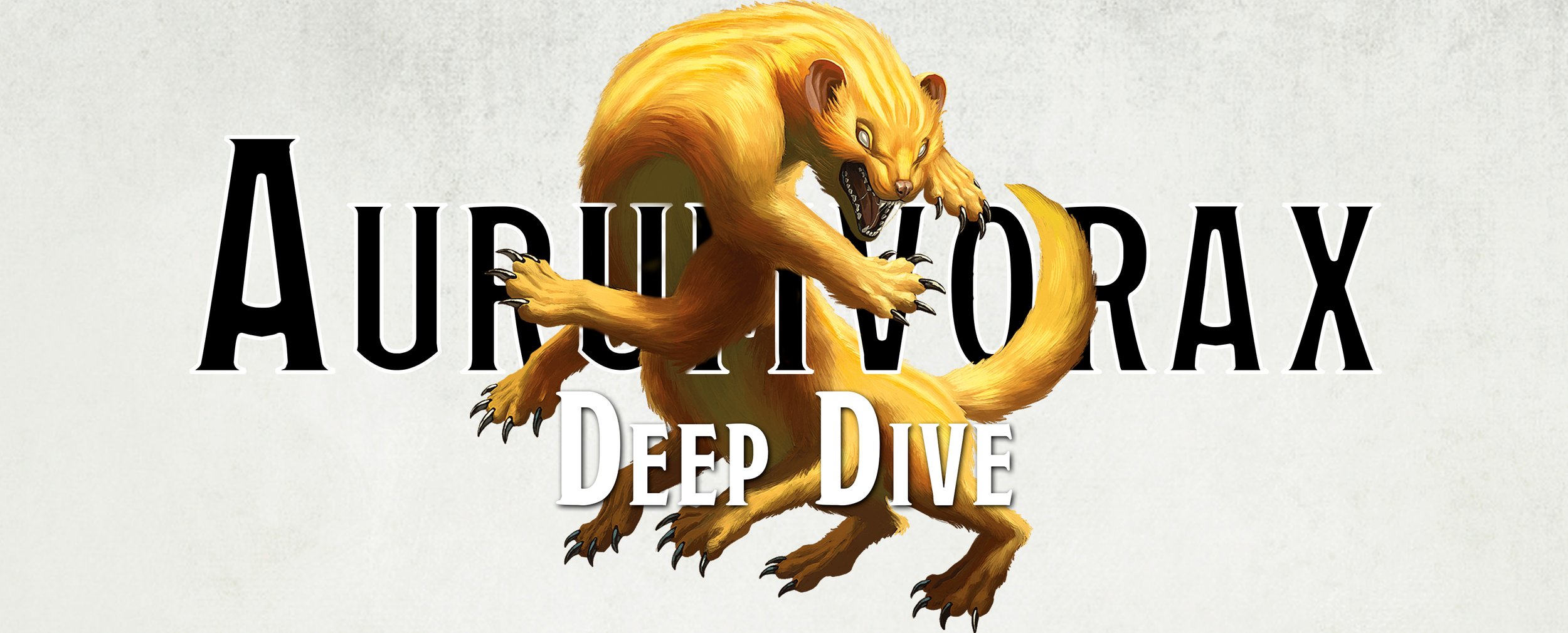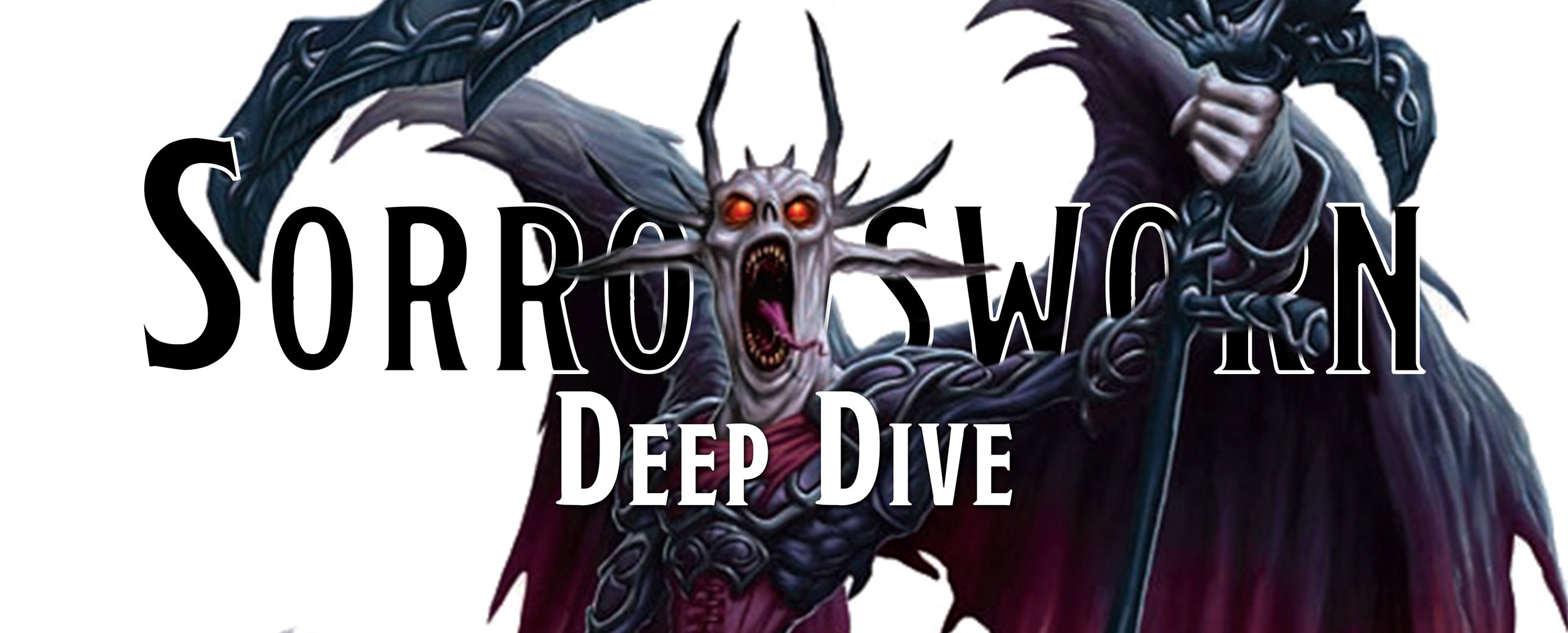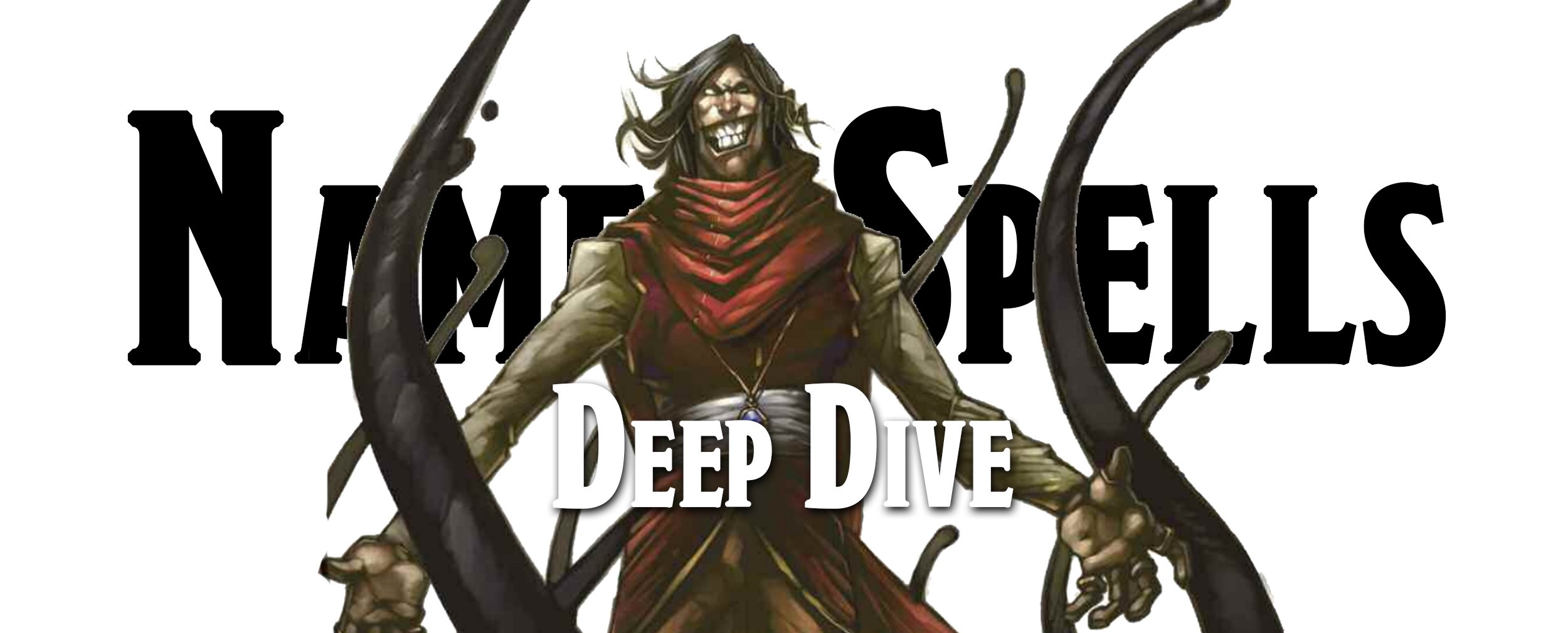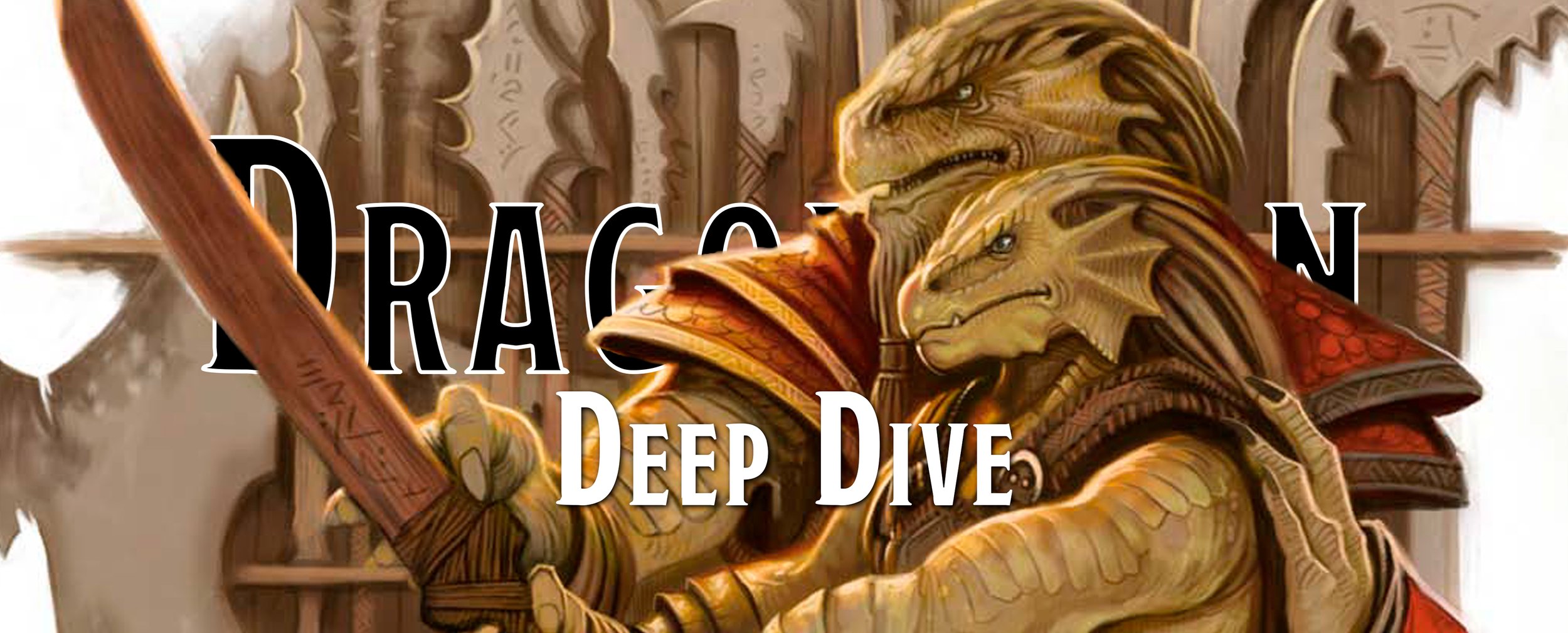Deep Dive - The Artificer
The Artificer is the class that faces the most ire of all the classes combined. This exciting class has some interesting abilities, but hitting things with a sword isn’t one of them unless your sword also features a chainsaw and flamethrower. Maybe they are all mad scientists, or maybe they are just misunderstood tinkerers with a passion for things that go boom.
If you are a fan of Artificers, tool crafters, and utilizing tools to get the job done, make sure you check out our series on Making Tools Useful as well as our Kickstarter with over 40 tools to use at your table!
2nd Edition - Artificer (Wizard School of Artifice)
Key Features
• HP die d4 hit die
• Primary Ability Intelligence
• Attribute Requirements Intelligence 12, Constitution 15
• Wizard subclass
• Infuse objects with a spell over the course of a week
• Craft temporary magical items over weeks of work
While not their own class, the Artificer first appears as a subclass of the wizard in Player’s Option - Spells & Magic (1996). The special school for wizards is known as the School of Artifice, and is focused on storing and channeling magical energy into objects for the wizard to use at their leisure later on. It’s a strange school of magic, but it’s great for those who just like the idea of crafting magical objects or using gadgets to solve your problems for you.
Player’s Option - Spells & Magic, 1996 TSR Inc.
Also, you get a free laboratory in your home town. Well, it’s not really free. You are technically going to have to pay fees every month to keep your laboratory up and running. What this will run you is 50 gp per level every month, so if you are a 10th-level wizard, you better hope you have a spare 500 gp to pay for the laboratories upkeep or you will find yourself without a laboratory. In addition, if you decide to move shop, maybe to a cheaper zip code in the city, it is going to cost you 1,000 gp per level to construct a new laboratory… and you still need to cough up the 50 gp per level for rent. We suppose the idiom that death and taxes are the only certain things in life really rings true for an Artificer trying to keep their laboratory open for business.
An Artificer doesn’t get much for being a separate school of magic from other wizards. They don’t get bonuses to a specific school of magic, they don’t get bonuses to their saving throws, and they just don’t get a life. Seriously, an Artificer’s opposition school is necromancy and spells in the school of enchantment/charm that affect living creatures, meaning that if they want to cast one of those spells, then they are out of luck. They can’t cast those spells.
It’s not all negatives for the School of Artifice though. At 4th level, they get their first break and can store spells in prepared items. It’s a big deal since now they can prepare other spells in their spell slots, allowing them to keep the odd featherfall spell that they might need in an item while they prepare even more magic missile spells. An Artificer gets to store spells a number of these spells equal to their level, so a 6th level Artificer gets six items they can enchant, and each time can be used once before it must be re-enchanted. The only downsides are that it takes a week to enchant each item, it requires an item worth at least 100 gp, and only the Artificer can use that one-and-done spell stored in the item. But other than that, who wouldn’t be excited to just have a few extra spell slots lying around?
If that doesn’t wow you, the Artificer gains the ability to create temporary magical items at 7th level. These Artificers are free to make any magical item found in the Dungeon Master’s Guide so long as it isn’t restricted to other classes. This is a long process, requiring a number of weeks equal to the item’s experience point value divided by 500. This means that a carpet of flying would take 15 weeks to create, since it has an experience point value of 7,500, while a cloak of the bat would only take three weeks since it is worth 1,500 XP. It also costs at least 100 gp per week of work, and the DM is free to arbitrarily increase that amount if they so wish, so you better have brought cookies this session.
Once the Artificer goes through all of the trouble of developing and researching the item they want to create, and paying exorbitant fees along the way, they… still do not have their magic item. Now they have to make a research check, with a failure resulting in them having to repeat all that above, and a success meaning they now know how to make the item. Once they know how to make the item, they can now attempt to craft the item, which takes half of the amount of research time, so a carpet of flying would take 7 weeks to craft while a cloak of the bat would only take a week and a half. The Artificer then spends 2d6 x 100 gp plus the cost of the item itself, so they are even deeper in the hole by the time they have created their item.
Once you make one more Learn Spells check to craft the item, you can now rejoice as you have crafted a temporary magic item! After all that work, you have created a temporary magic item that will only last for 1d6 days plus one day per level of the Artificer. We aren’t quite sure if making temporary magical items is really worth the cost and time it takes, but no one else can do it, so now is the perfect time to rub it in the face of the barbarian who still can’t even write their name or read in this edition.
There are also numerous NPC Artificers mentioned in the 2nd edition. They were individuals of higher standing and often held positions of power. In the Forgotten Realm Campaign Setting (1993), we learn of the land of Myth Drannor, a long-lost city that was the home of some of the most powerful Artificers in this setting. Larger cities, including Baldurs Gate, had great temples to Gond Wonderbringer. The temples were run by High Artificers who had significant influence in the cities they were in.
3rd Edition - Artificer
Key Features
• Hit Points d6
• Primary Attribute Charisma
• Ability to infuse items with magical properties, instead of spellcasting
• Access to all crafting feats
Eberron Campaign Setting, 2004 Wizards of the Coast / James Zhang
The Artificer debuted as a class in the Eberron Campaign Setting (2004), a campaign setting where magic and technology are the same words. This is the perfect location to be an Artificer, which is good since they go through quite a few changes.
The Artificer is not a spellcaster but a builder of things, a tinkerer, and someone who can enhance ordinary items into something powerful. This isn’t to say that they don’t use magic, as the Artificer imbues their items with spells, though they aren’t bound to just divine magic from the gods or through the knowledge of arcane magic, like wizards. Instead, the Artificer works with the rawest, purest form of magic itself to infuse their items.
The Artificer has a variety of abilities and traits, and we’ll start with the two that make the Artificer, well… the Artificer. They are the ability to infuse items and to create items. The Artificer has an extensive infusion list, including such things as armor enhancement, resistance item, and toughen construct. With 15 infusions the Artificer can use, there is a wide variety of ways they can assist the party in killing those annoying kobolds, which makes them one of the best support classes. Casting infusions mirrors that of other casters, but again, infusions aren’t magic even if they are basically that.
The Artificer has access to every infusion on the list up to the level they can use, so no worries about picking one when you level up. They have limitations on how many infusions they can cast, or infuse, per day, with the progression similar to other casters. They must also take a long rest to regain any used infused slots they have, just like a real spellcasting wizard.
Creating items is the next prominent ability in the Artificer’s arsenal. We’re not talking about making a simple robe or a dull old sword. Artificers can create magic items! Things just got much more interesting since everyone loves magic items. Even better, the Artificer doesn’t need any of the required spells in the creation process. They can simply roll a check to overcome such trivialities as needing to cast a spell, making them quite good at creating pretty much any magic item they want to. This still requires the normal gold and XP needed to craft magical items, but the Artificer is given so many bonus feats for crafting that they gain bonuses to crafting, reducing costs, and more.
Homunculus / Monster Manual, 2003 Wizards of the Coast / Adam Rex
The next big ability an Artificer gains is a friend that they can create. The real treasure of adventuring are the friends you made along the way, and the Artificer decided to double down on that. At 4th level, the Artficier can make a tiny homunculus to love and cherish and send on dangerous scouting missions that will ultimately end up with the homunculus dead and forgotten, and the Artificer making a new one, completely forgetting that they just let their cherished creations die for them. While we aren’t saying that all Artificers are cold and heartless, we are saying that the road to being the greatest Artificer is paved in the bodies of forgotten homunculus who died for their cause.
Luckily for the homunculus, they aren’t cursed to be tiny, one-hit die creatures forced to serve an uncaring creator. Instead, an Artificer can tinker with their creation, making it stronger and healthier, increasing its hit dice and abilities as it levels up. This isn’t a cheap process, costing 2,000 gp and 160 XP every time the Artificer levels up their homunculus. While it is pricey, can you really put a price on friendship?
The Artificer also has a few other abilities and traits worth mentioning. Artificers can use practically any spell from a wand or spell, so while their spell list is limited, they don’t really need to know that many spells since they can create whatever they want. In addition, the Artificer can disable traps, just like a rogue, and drain the magical essence out of an item, allowing them to transfer the remaining experience points it cost to make a magic item and put it towards making another magic item, saving them from having to spend their own XP. They also get almost every crafting feat you can think of for free, so they are the ultimate handyman, capable of taking on any household chore you need done.
4th Edition - Artificer
Key Features
• Hit Points 12 + Constitution score at 1st level, 5 per level after
• Key Abilities Intelligence, Constitution, Wisdom
• Power Source is arcane magic and is a spellcaster
• Tinkerer & Battlesmith are example builds
Eberron Player’s Guide, 2009 Wizards of the Coast / William O’Connor
In the Eberron Player's Guide (2009), the Artificer appears with many of its old abilities, along with some new ones. The Artificer loves to create and tinker with all sorts of objects, creating new ones and altering existing ones. Such items include potions, tools, alchemist compounds, and weapons covered in magical runes. These characters now use arcane magic and can instill things with that magic. They use various methods, including sigils, drawings, and components. It's a change from the 3rd edition, which repeatedly made it clear the magic used by the Artificer was neither arcane nor divine.
There are two different Artificer builds, though these builds are just suggestions for creating a specific focus for your Artificer. The Tinkerer Artificer's focus is on empowering weapons and armor. You can give your creations life, making a small friendly servant do your bidding. The Battlesmith's focus is on making weapons hit harder, armor harder to hit, and all your friends more formidable than they were the day before. Who knows? The wizard may even consider a round of melee combat if given the proper buffs.
Artificers utilize rods, staffs, and wands as their implements, channeling and directing their spells through the objects. When an Artificer uses one of its powers, they must channel it through their selected object, allowing them to further enhance the power so that they hit harder, with greater accuracy, or with additional effects.
Battle Engineer / Eberron Player’s Guide, 2009 Wizards of the Coast / Matias Tapia
What would an Artificer be if they couldn't animate objects and have a construct to pal around with? It's a bit different from before with your super weak homunculus whose only point is to scout ahead and be killed by whatever monster you’ll be facing soon. Instead of summoning creatures from across the planes, instead, the Artificer pulls forth an elemental spirit to inhabit an object of their choice, giving the object life. We are sure the elemental spirit isn't thrilled, but nobody asked them. The Artificer also binds a bit of themselves to their freshly created construct, so you better take care of your little buddy. If it dies, the Artificer is sad, wiped out, and loses a Healing Surge.
Jumping over to their powers, all Artificers are given the ability to create healing infusions that they can keep for themselves or hand out to their allies. These drafts of healing not only restore hit points but could also be used to bolster their defenses, making them that much harder to kill. Once you’ve spent some time adventuring, you also start getting powers that can be used at will, once per encounter, or once per day. These powers are called Artificer Spells, so we guess that those infusions you got in 3e didn’t make it over and our Artificer is now a spellcaster!
These powers highlight the role that Artificers have in combat, which is to be a leader. No, we aren’t meaning that the Artificer stands a mile back and gives ‘suggestions’ to their allies, but rather offers buffs and boons to their allies, while also debuffing the enemy at the same time. You won’t be dealing mega-points of damage as an Artificer, because you are someone who creates useful items for yourself and your allies. Though that doesn’t mean you can’t tinker away and build powerful weapons and inventions to decimate your enemies, it just won’t normally be an Artificer’s focus.
Dragon #403, Sept. 2011 Wizards of the Coast / William O’Connor
Dragon #403 (September 2011) provides new backgrounds for the Artificer as well as new powers. There's a lot of information about Eberron, the aftermath of the Spellplague, and the Artificers' role as a result. Here's the short version. Artificers are primarily found in the land of Gond, although also throughout Eberron's boundaries. The Spellplague diminished the technological advances throughout the land, crippling Artificers. Forced to adapt to this new world, they sought out the lost knowledge and focused on experimenting to create unique and wondrous items.
There are five new options for molding your Artificer. The Lantan Scholar is obsessed with unearthing the lost knowledge of the civilization of Lantan. They search out text and artifacts of this once mighty people with abandon. An Eartheart Engineer is a student of war, focusing on creating battle machines. The Procurer of Pond travels the land searching for artifacts to help in their creations. Such a life can be dangerous, and there is no limit to the lengths they will go to to find them. An Arcane Scientist creates magical items through enchantments, runes, and sigils. Finally, the Skyclace Exile has been banished from their land, unable to adapt to the political backstabbing in High Imaskar. You have set off into the world to find your fame and fortune, helping those in need through your magic and the object you create.
5th Edition - Artificer
Key Features
• Hit Points d8
• Primary Attribute Intelligence
• Diverse spell list
• Four specialists - Alchemist, Armorer, Artillerist, & Battle Smith
Alchemist / Eberron - Rising From The Last War, 2019 Wizards of the Coast
The Artificer is forced to wait 5 years before it makes its debut in Eberron - Rising from the Last War (2019) as the first, and only, new class for this edition. It may have taken a while for our expert tinkerer to find its way, but it comes loaded with old and new powers. Just like before, the Artificer takes magic and technology, and combines them into items of great power. They are constantly searching for new and exciting blueprints, artifacts, and elemental energy to extend their already vast knowledge of such things.
But like the Artificers of previous editions, the creation of new objects is only half the story. They can infuse items, making temporary magical items to the joy of their fellow party members. These infused items remain in an item until the death of the Artificer, you infuse too many items with the oldest infused item losing its power, or you give up your knowledge of the infusion to learn another one. So if you make a shiny magic shield for your fighter, better give them a heads up if you are planning on forgetting that infusion for some jump boots before they go off to fight the BBEG one-on-one.
Artillerist / Tasha’s Cauldron of Everything, 2020 Wizards of the Coast
In addition to your infused items, Artificers can also place tiny bits of magic into common items, though don’t start thinking that you are going to be the Johnny Appleseed of magic items. These effects are incredibly weak, like only making noise that can only be heard within 10 feet of the object, and lasts until you make a number of these objects equal to your Intelligence modifier or until you end it. So you are, most likely, not even going to have half a dozen of these weak, magical objects lying about. Not quite the proliferator of magic items that we might’ve hoped for in our Artificer.
Looking at the main meat-and-potatoes of the Artificer’s power budget, they have quite the extensive spell list that is a blending of divine and arcane magic, like getting access to the cure wounds spell and the fly spell. To cast these spells, an Artificer doesn’t rely on a spellcasting focus, like a wand or orb, but rather on their tools. When they cast a spell, they pull forth their tools, maybe a delightful brew with their brewer’s supplies, and the spell is channeled through it. This can even go into the flavor of their spellcasting, as there is a sidebar letting players know that they could flavor their spellcasting as pulling out weird gadgets and gizmos to bombard their enemies with instead of calling their spells… spells.
Tasha’s Cauldron of Everything, 2020 Wizards of the Coast
Now what you are really excited for, in an Artificer, are all the magic items you get to create. Well, we already talked about their infusions, and that’s about it as far as creating magic items. But luckily, Artificers do get a special relationship with magic items where they can attune to extra magic items at 10th level and higher. Once they become master Artificers at 20th level, they even gain a bonus to their AC from the six items they can attune to, which is double what every other ‘normal’ adventurer can do.
If you were hoping for the return of the homunculus, you are in luck as they are back and ready to die for you in a desperate reconnaissance mission. This homunculus is a bit better than before, automatically gaining extra hit points and abilities as you level up, so your friend is no longer going to be a huge money pit like before. Though, to create one it will take one of your infusions and 100 gp, but can you really put a price on friendship? Even the artificial friendship between a master and their creations?
Homunculus / Tasha’s Cauldron of Everything, 2020 Wizards of the Coast
If you are wanting to make an Artificer even more your own, there are four subclasses available with the Alchemist, Armorer, Artillerist, and Battle Smith. The Alchemist lets the Artificer make all sorts of elixirs, chemical creations, and other liquids. The Artificer’s main ability is being able to create an Experimental elixir. The Artificer can produce items that can heal, increase walking speed, a bonus to AC, and a boldness that adds a d4 to attacks, flight, or transform themselves.
Armorers are what you expect when you are stuck in a cave with spare parts from highly volatile missiles. They wear heavy armor that they infuse with special powers, allowing them to shoot lightning and punch thunder. They are meant to be on the front lines of battles, though some are more into a stealth approach, despite the heavy armor that they wear.
Whereas Armorers prefer to be up close and personal, the next subclass, the Artillerist, is the opposite. They are experts in crafting turrets, defensive mechanisms, and shooting creatures from afar. Their special abilities revolve around an eldritch cannon that they can summon, which is basically a defensive turret that starts blasting away at their enemies while the Artillerist is busy making deals for more gunpowder with some friendly giff.
Armorer / Tasha’s Cauldron of Everything, 2020 Wizards of the Coast
The last of the specialists, and who apparently didn’t get the memo about having a name that starts with ‘A’, is the Battle Smith. These Artificers love to make items to protect and heal their comrades, bringing along their faithful metal companion with them. This metal companion follows orders from the Artificer and puts most pets to shame as they follow their commands without question. They can be found on the front lines providing a flanking buddy with the rogue or defending your squishy cleric from being turned into a paste.
No matter which subclass you go with, you will be a force of power as you use magic to fuel your technological doo-dads and whatz-its. Just don’t go and try to build any permanent magic items, we don’t do that in this edition.
While the Artificer may have been a weird subclass for a wizard, forced to spend mountains of gold on temporary objects, they have grown in quite the popularity. As a class, they are ripe in flavor and abilities, capable of providing all manner of buffs for their allies, all the while bringing a lightning-crackling hammer down on their enemies, that they designed, of course. This artisans are a strange lot, but we think these mad tinkerers are a wonderful addition to any adventuring party.
If you enjoy our Deep Dive series, consider
supporting us on Patreon and following us on Twitter!


